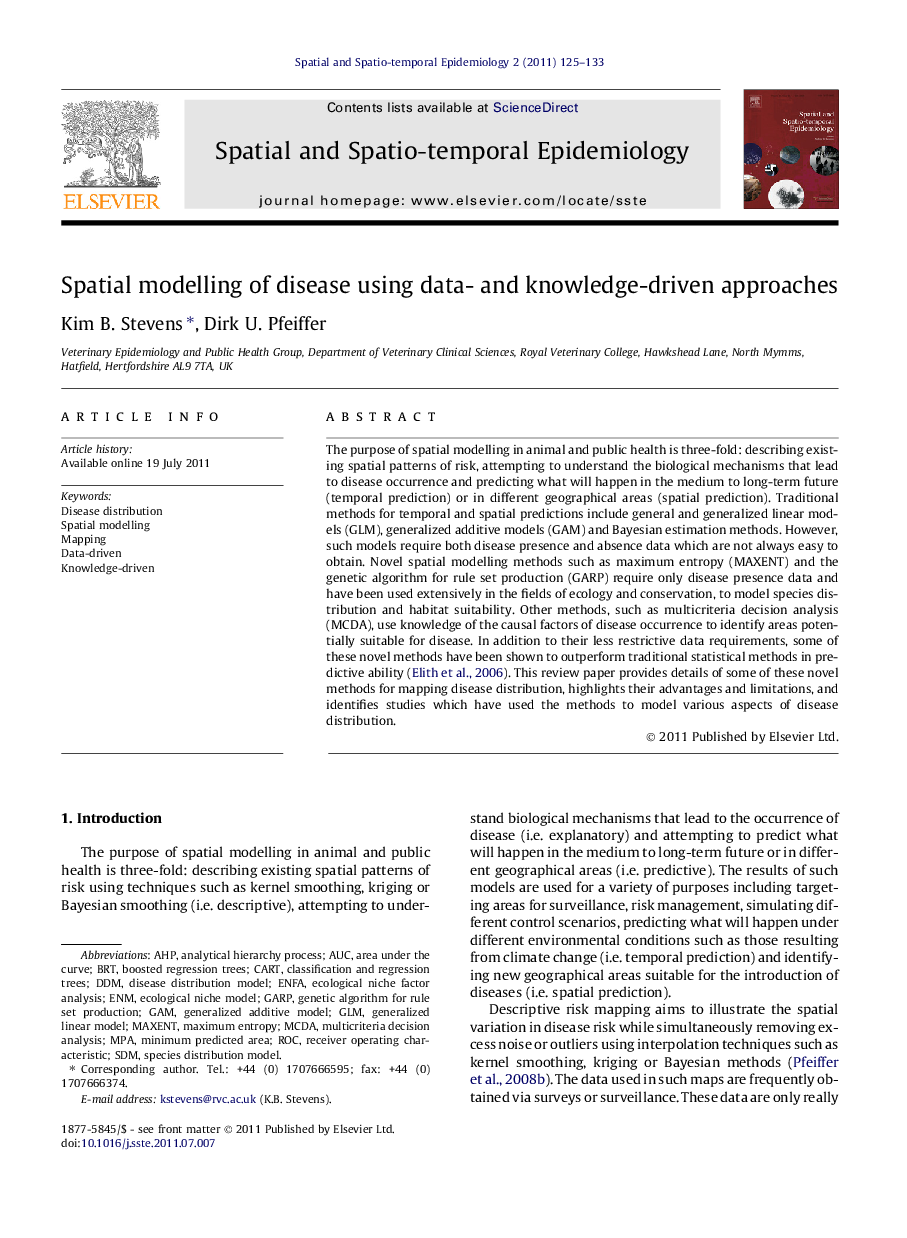| کد مقاله | کد نشریه | سال انتشار | مقاله انگلیسی | نسخه تمام متن |
|---|---|---|---|---|
| 1064455 | 948481 | 2011 | 9 صفحه PDF | دانلود رایگان |

The purpose of spatial modelling in animal and public health is three-fold: describing existing spatial patterns of risk, attempting to understand the biological mechanisms that lead to disease occurrence and predicting what will happen in the medium to long-term future (temporal prediction) or in different geographical areas (spatial prediction). Traditional methods for temporal and spatial predictions include general and generalized linear models (GLM), generalized additive models (GAM) and Bayesian estimation methods. However, such models require both disease presence and absence data which are not always easy to obtain. Novel spatial modelling methods such as maximum entropy (MAXENT) and the genetic algorithm for rule set production (GARP) require only disease presence data and have been used extensively in the fields of ecology and conservation, to model species distribution and habitat suitability. Other methods, such as multicriteria decision analysis (MCDA), use knowledge of the causal factors of disease occurrence to identify areas potentially suitable for disease. In addition to their less restrictive data requirements, some of these novel methods have been shown to outperform traditional statistical methods in predictive ability (Elith et al., 2006). This review paper provides details of some of these novel methods for mapping disease distribution, highlights their advantages and limitations, and identifies studies which have used the methods to model various aspects of disease distribution.
► A range of data- and knowledge driven spatial modeling methods arereviewed.
► Data-driven methods include those that use presence-absence or presence-only data.
► Knowledge-driven modeling focuses on GIS-based multi-criteria decision analysis.
► Approaches for model validation and describing model uncertainty are outlined.
Journal: Spatial and Spatio-temporal Epidemiology - Volume 2, Issue 3, September 2011, Pages 125–133